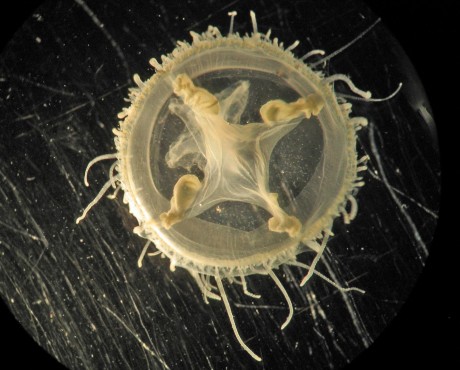
YOU heard it correctly – jellyfish have been discovered in Lough Erne.
But, don’t fret the freshwater creatures aren’t likely to cause harm to humans – in fact, they date back to as far as 1880s in parts of England.
“It is a very small jellyfish that is approximately five to 25mm in diameter,” explained John Early, Invasive species and freshwater policy advice officer with the DOE.
“It was first discovered in Lough Erne in mid-August 2013. This discovery followed on from an earlier discovery in Lough Derg in the Republic. Samples of the species taken from Lough Derg were identified by an expert in the University College Cork as being the freshwater jellyfish Craspedacusta sowerbii.”
So far, records show that this particular species has only been found, in Ireland, however, the jellyfish was first discovered back at Regent’s Park, London in 1880.
The species is more or less transparent with a distinctive white/greenish cross and a white/cream circular outline.
It possesses in the region of 250 – 300 small tentacles. These jellyfish have two distinct life stages; one is a tiny attached polyp and the second is what we know as the jellyfish or medusa stage.
The polypbuds off medusa under warm water conditions, generally when water temperature reaches 25 degrees Centigrade.
The traditional fear of jellyfish need not apply in this case, however, as Mr Early confirmed: “There are no reports of any health risks to humans from any other European countries in which the species has been recorded.”








